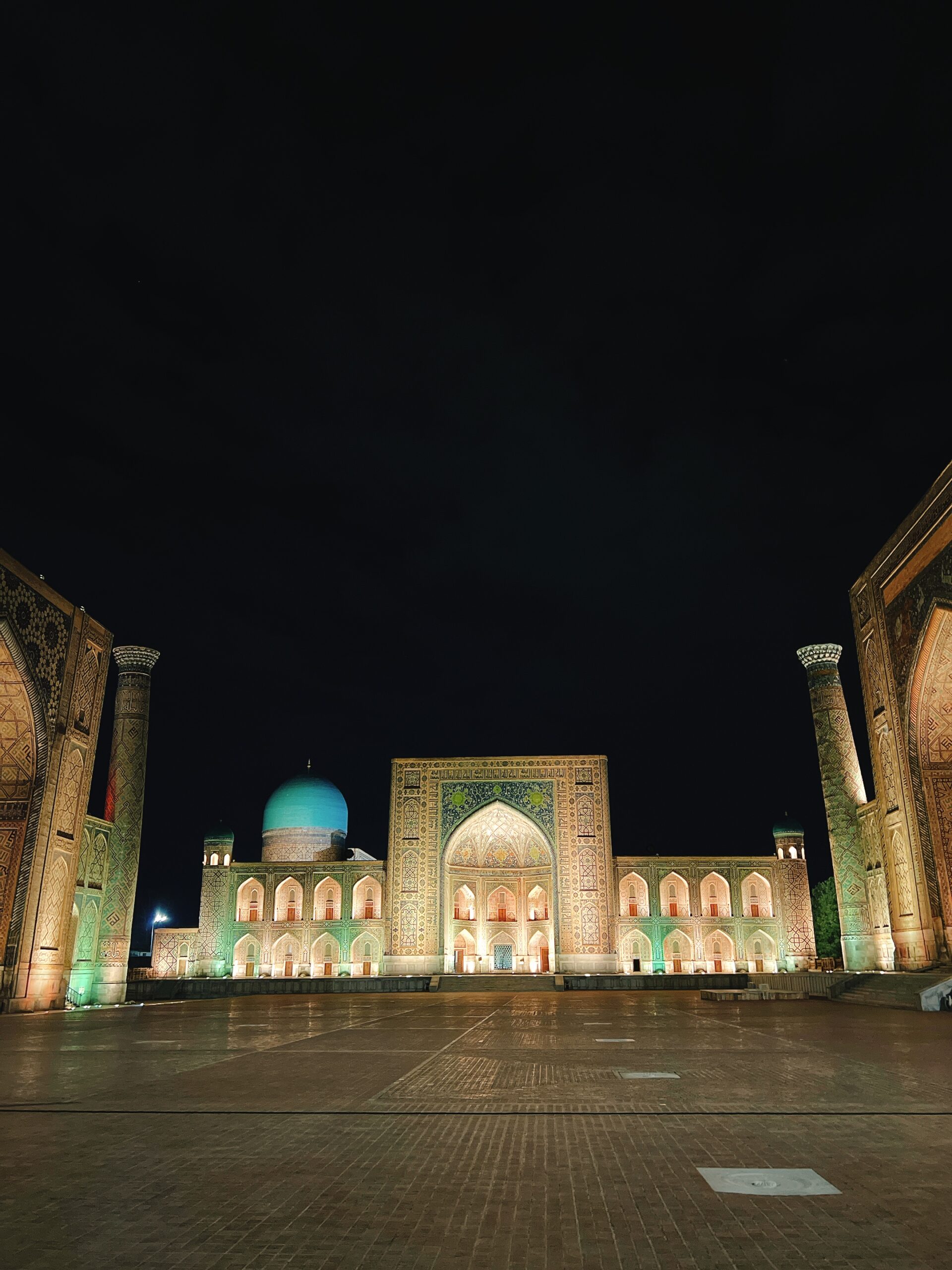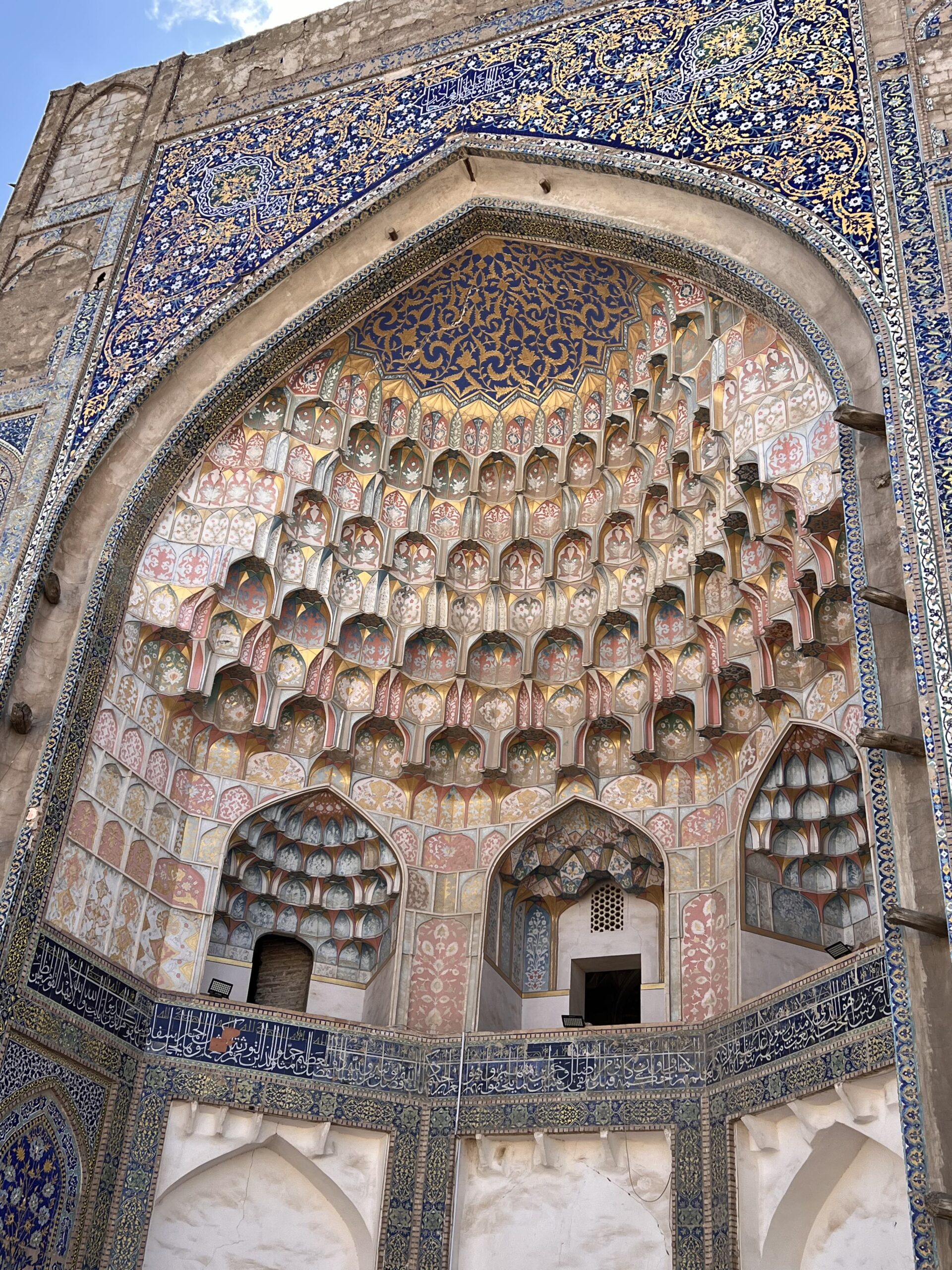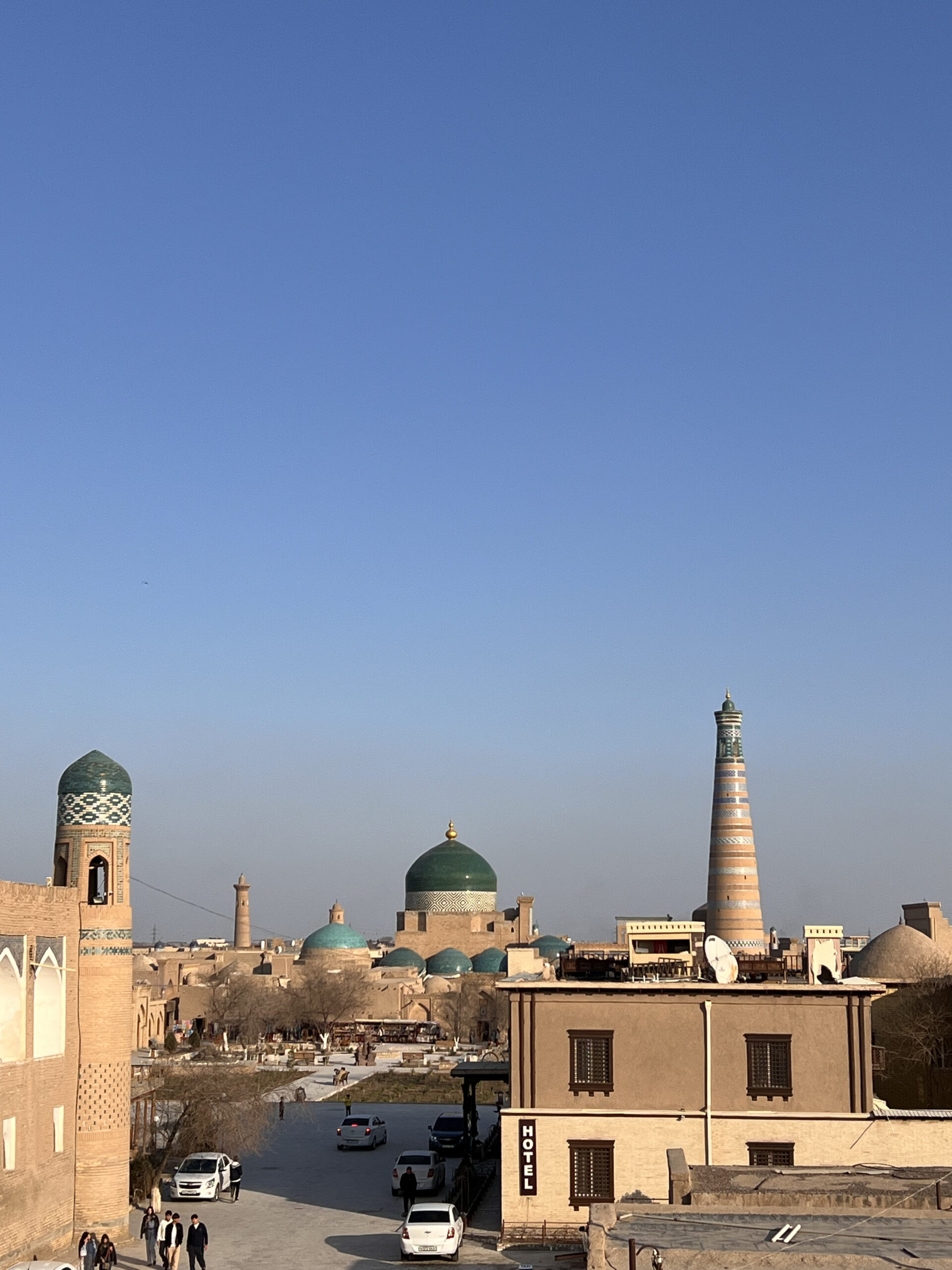
No name is so evocative of the Silk Road as Samarkand. For most people it has the mythical resonance of Atlantis. Samarkand remains a breathtaking place to visit.

On the ground the sublime, larger-than-life monuments of Timur, the technicolour bazaar and the city’s long, rich history work some kind of magic. Surrounding these islands of majesty, modern Samarkand sprawls across acres of Soviet-built buildings, parks and broad avenues used by buzzing taxis. You can visit most of Samarkand’s profile attractions in two or three times. If you are short on time, at least see the Registan, Gur-e-Amir, Bibi-Khanym Mosque and Shah-i-Zinda.

Registan
This ensemble of majestic, tilting madrasahs – a near overload of majolica, azure mosaics and vast, well-proportioned spaces – is the centrepiece of the city. It is arguably the most awesome sight in Central Asia. The Registan, which translates to ‘Sandy Place’ in Tajik, was medieval Samarkand’s commercial centre and the plaza was probably a wall-to-wall bazaar.


The three grand edifices here are among the world’s oldest preserved madrasahs, anything older than that having been destroyed by Chinggis Khan. They could have taken their knocks over the years due to the frequent earthquakes that strike the region; that they are still standing a testament to the incredible cfaftsmanship of their builders. For an idea of the level of destruction of the madrasahs at the start of the 20th century, do check out the excellent photo exhibit inside the Tilla-Kari Madrasah.

Gur-e-Amir

The madrasah, a small building with a typical yard composition was meant to teach the children about Samarkand nobility. Opposite the madrasah there is a khanaka with a central hall and cells – hudjras. Both buildings were erected by Mukhammad Sultan’s order for Samarkand to become a centre of Islamic education. But Muhammad’s sudden death in 1403 led to a change in an intended use of the complex.

After the death of Muhammad Sultan, Amir Timur was inconsolable: he ordered to put the remains of his beloved grandson in a madrasah’s corner room – darskhana, and immediately started the construction of the mausoleum which closed the ensemble from the south. Today, Gur-e-Amir is well-preserved. It even served as a prototype for famous samples of architecture of the Great Mughal: Humayun Mausoleum in Delhi and the Taj Mahal in Agra, built by Timur descendants, who ruled northern India.
Shah-i-Zinda
This is Samarkand’s most moving and beloved site, the stunning avenue of mausoleums contains some of the richest tilework in the Muslim world. In the 14th and 15th centuries, it developed into an architectural testing ground whose celebration of ceramic art, unrivalled in Central Asia, makes this street of the dead perhaps the most visually stunning sight in a city of superlatives.

The name, which means ‘Tomb of the Living King’, refers to its original, innermost and holiest shrine – a complex of cool, quiet rooms around what is probably the grave of Qusam ibn-Abbas, a cousin of the Prophet Mohammed who is said to have brought Islam to this area in the 7th century. It appears the Arabs established Kussam, who probably never saw Samarkand, into the cult of Shah-i-Zinda (the Living King) by adapting a pre-lslamic mythical ruler, maybe Afrosiab himself, reigning beyond death beneath the earth. The Mongol conquest flattened the surrounding complex but left Kussam’s grave alone, as Moroccan traveller ibn-Battuta reported in 1333: “The inhabitants of Samarkand come out to visit it every Sunday and Thursday night. The Tartars also come to visit it, pay vows to it and bring cows, sheep, dirhams, and dinars; all this is used for the benefit of the hospital and the blessed tomb.”

Ulugbek’s Obervatory
The remains of Ulugbek Observatory is one of the greatest archeological finds of the 20th century. Ulugbek was probably more famous as an astronomer than as a ruler. His 30m astrolab, designed to observe star positions, was part of a three-storey observatory he built in the 1420s. All that remains now is the instrument’s curved track, unearthed in 1908. The small on-site museum has some miniatures depicting Ulugbek and a few old ceramics and other artefacts unearthed in Afrosiab.


Where to stay
📍 Antica (guesthouse) Add: Iskandarov 58
📍 Hotel Arba (boutique hotel) Add: Mahmud Koshgari 92
📍 Furkat (B&B) Add: Mulokandov 105
📍 Hotel Legende (historic hotel) Add: Tolmosov 60
📍 Malika Prime (hotel) Add: Bo’stonsaroy
📍 Registon Saroy (boutique hotel) Add: Suzangaron Street 66
We personally stayed at the Registon Saroy, which is within walking distance to Registan Square. The location is very good, and that stretch of road has many eateries. Breakfast is included in the price, with a good spread of food prepared by the local owners. It should not be expected like a big chain hotel, but this seems like a family-owned hotel and the service is authentic. The rooms are comfortable and comes with hot water, which is much needed during winter. There is no view in the room, except that it faced the inner courtyard.

The weather changes quite quickly, as you can see, it was sunny on one day, and the next day it started off with a light drizzle, then the temperatures dropped to 0 deg and it started snowing for almost the whole day. It was nice to experience Samarkand in the snow as well.
Day trip to Shahrisabz

For those who have an extra day to spare, you can also visit Shahrisabz, which is about 2 hours journey by car.
Shakhrisabz is one of the most ancient and picturesque cities of Uzbekistan. Its historical centre is included in the UNESCO World Heritage List. The great commander Amir Temur was born in this city. The city with its green trees and flowers rightfully got its name “Green City”. Arriving to Shakhrisabz, you should definitely see the ruins of the ancient Ak-Saray Palace, the Kok-Gumbaz mosque, the Dor-ut Tilovat memorial complex, and the mausoleums of Dor-us Saodat, Shamsad-Din Kulala, Gumbazi-Seyidan.
Looking at the modern architecture of the city, it is difficult to believe that this city is 2700 years old and that it has played a significant role in the history of Central Asian region. Formerly Shakhrisabz was the capital of the ancient state of Sogd and had the name of Kesh. It was the famous centre of culture, trade and handicrafts. In 329 BC Alexander the Great conquered the city and soon Hellenistic culture and cult of the Greek gods appeared there. Over a millennium, Shakhrisabz was under the reign of various dynasties and in the 8th century it was the centre of anti-Arab and anti-Islam rebellion. It has changed hands many times over the years.


